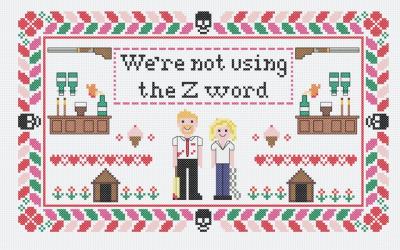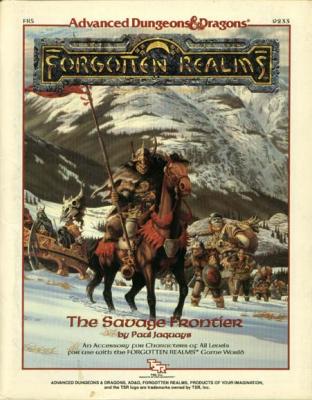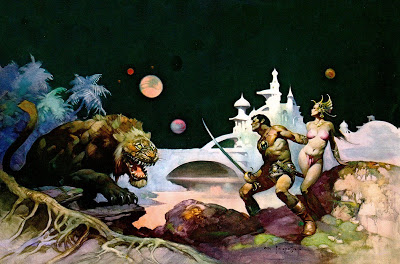Everyone is still excited about Mars. And I can remember how 20 years ago it really was the big thing to do in space. Everyone was wondering if there was or is water, and perhaps there are some tiny bugs or mosses living in cracks in the ground and things like that. But now we had a lot of probes on Mars that did really well and even had a close up shot of a bit of ice under the red dust. Reaction was “huh, that’s pretty neat”, but didn’t really seem like such a great discovery anymore, with much more interesting stuff going on the Jupiter and Saturn moons and planets around other stars. And even after a decade of combing the desert of Mars, other than ice we ain’t found shit!
Hunting for life on Mars has for a very long time been more about searching for traces of microbial life on Mars from billions of years ago. With some hope to find tiny fish on Europa or Enceladus and methane rivers on Titan, Mars really looks pretty boring now. No real need to get any scientists on the ground there to research microbes anymore. So getting people on other places than Earth and the Moon is really mostly (or entirely) because we could and it would be cool. So let’s scrap going to Mars, that place sucks. Venus would be so much cooler to go to.
 Now the big problem with Venus is that the surface is about 470°C hot and air pressure more than 90 times higher than on Earth and enough to crush almost all submarines. Also, the atmosphere consists mostly of Carbon Dioxide and sulfur dioxide, which likes to form sulfuric acid. Which makes Venus the worst place to land on in the entire solar system, other than the surface of the sun. However, you don’t have to land on it when you could also cruise around in an airship high up in the clouds. And then it’s actually probably the nicest place for humans in the solar system other thab Earth.
Now the big problem with Venus is that the surface is about 470°C hot and air pressure more than 90 times higher than on Earth and enough to crush almost all submarines. Also, the atmosphere consists mostly of Carbon Dioxide and sulfur dioxide, which likes to form sulfuric acid. Which makes Venus the worst place to land on in the entire solar system, other than the surface of the sun. However, you don’t have to land on it when you could also cruise around in an airship high up in the clouds. And then it’s actually probably the nicest place for humans in the solar system other thab Earth.
- At a height of about 50 km above the surface, the air pressure is similar to that found on Earth at sea level, with temperatures around pleasant 20 to 30°C.
- The atmosphere consists mostly of carbon dioxide and nitrogen, which are both not harmful to humans. You would suffocate because there is no oxygen to breath, but that luxury is found nowhere except on Earth.
- This only leaves the sulfur dioxide as the remaining nasty environmental factor, but when sulfuric acid reacts with organic matter, it leaves behind pure carbon. Carbon fibre, carbon nanotubes, and graphite are all modern materials that people get quite excited about and they all happen to be really just pure carbon. (Carbon fibre is mixed with fibres of other materials, but there are surely options that also don’t react with the acid. Some metals, like titanium, will react with the acid, but then form a thin layer of oxide on the surface which seals the metal and keeps the acid away.
- While there are almost no oxygen molecules in the atmosphere of Venus, most of it is carbon dioxide. If you can split the carbon dioxide, you get oxygen to breath and carbon to make replacement parts for your carbon airships.
- Even 50 km above the surface, there is still so much atmosphere above you that it helps block radiation from the Sun, which on the Moon and Mars would be a lot nastier even though they are much farther away.
- The atmosphere also makes the whole landing part a lot easier. Landing on the Moon is easy because it has very little gravity. Landing on Earth is also easy, because you can use parachutes and wings to gently float down to the surface. Mars has lowe gravity than Earth, but still quite a lot, but also barely any atmosphere, which makes landing pretty rough. Robots can handle it, but with current technology any astronaut would feel like being in a plane crash. Or not, since he’d probably dead. On Venus, you have all the nice atmosphere so you can use parachutes to slow you down. And best thing, since you don’t actually go to the surface, you don’t have to land at all. If your airship goes down a bit faster and ends up lower than you aimed for, it will just bob back up to the altitude it was meant for. (Unless you get too deep and crushed and baked.)
- One of the best things about Venus is that it has a similar size and mass to Earth, which means it has also a very similar gravity. Even 50 km above the surface, the pull of gravity is almost the same as on the ground, which for Venus is about 90% of the gravity we experience on Earth. Floating around for a few minutes is fun, but low gravity does all kinds of unpleasant things to muscles, bones, and circulation over time. In an airship on Venus that would not be an issue.
- A trip to Venus is also shorter than a trip to Mars. Not hugely, but cutting a 550 day trip down to 450 is still 100 days not hanging around in space doing nothing. Carrying around 20% less food will also make the engineers very happy.
Really, the only annoyance about Venus is the sulfuric acid, which really is only a big problem when you get it on your skin and in your lungs. Which is sad, because otherwise you could go paragliding on another planet with nothing but a breathing mask. If weather is good and there are no acid clouds nearby, you probably still could get out on the roof without a full suit, enjoying the sun for a few minutes. Having irritated skin for a week and a minor sunburn would be totally worth it.
So yeah, forget about Mars, Venus is so much more fun.



